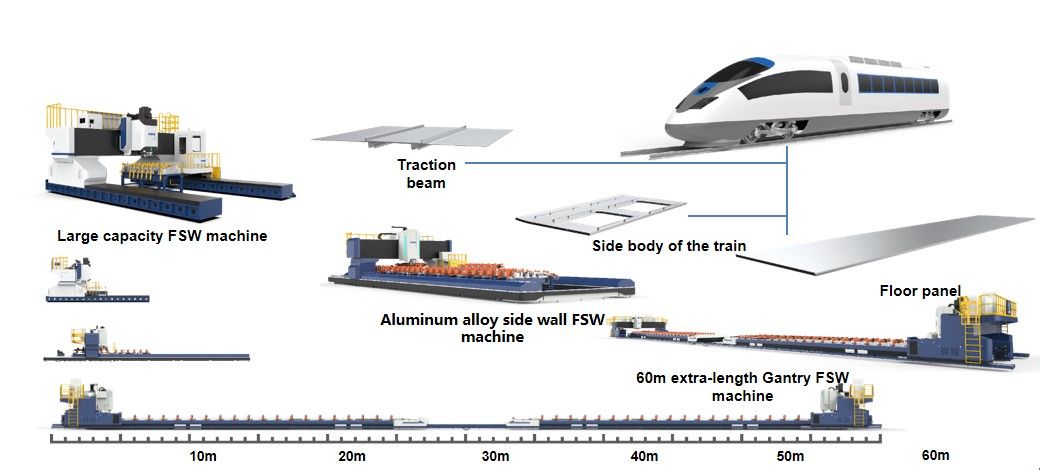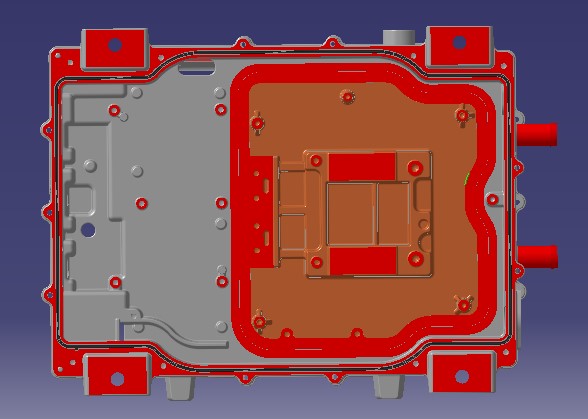Manufacturing process of Aluminum Alloy Wheels for Vehicles
The main manufacturing methods for aluminum alloy wheels for passenger vehicles include casting, forging, extrusion, and Friction Stir Welding (FSW). Below is a comparison of FSW with traditional methods like casting and forging:
1. Common Aluminum Alloy Wheel Manufacturing Processes
1.1 Casting
- Types:
- Gravity Casting (sand/metal molds): Low cost, suitable for simple shapes.
- Low-Pressure Die Casting (LPDC): Good fluidity, minimal porosity, used in mid-to-high-end vehicles.
- Die Casting: High-pressure molding for thin-walled complex structures, but high mold costs.
- Advantages:
- High production efficiency, suitable for mass production.
- Flexible design for complex geometries.
- Disadvantages:
- Prone to internal defects (porosity, shrinkage).
- Low material utilization (~50%-60%), requiring post-machining.
- Reduced strength unless heat-treated.
1.2 Forging
- Types:
- Open-Die Forging (hammering/pressing): Improves material flowlines.
- Ring Forging: Used for integrated hub and spoke structures.
- Advantages:
- High strength (close to material limits), excellent impact resistance.
- Lightweight and compact design.
- Disadvantages:
- Complex process, high tooling costs.
- Limited to simple shapes, not scalable for mass production.
1.3 Extrusion
- Process:
- Extrude aluminum profiles and assemble them (e.g., A/B pillars, spokes).
- Advantages:
- High material utilization (~80%-90%).
- Uniform strength and lightweight benefits.
- Disadvantages:
- Limited to simple cross-sections; complex structures require welding.
- High surface treatment requirements (prone to oxidation).
1.4 Friction Stir Welding (FSW)
- Principle:
- Uses a rotating tool (with shoulder and pin) to soften aluminum through frictional heat, enabling solid-state joining without melting.
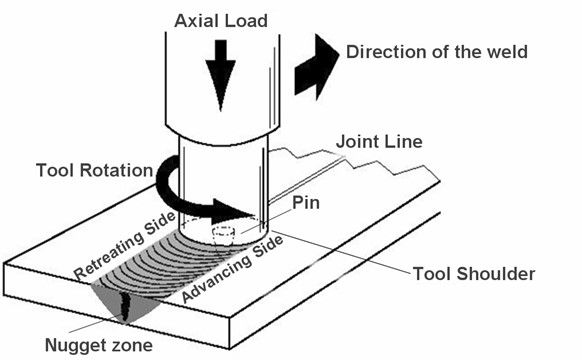
- Applications:
- Primarily used for hub-spoke integration or multi-component assembly (e.g., forged hubs combined with cast spokes).
- Advantages:
- No melt defects: Eliminates porosity, cracks, or slag inclusions.
- High joint strength: Weld strength (parent material).
- Lightweight potential: Reduces fasteners/bolts through integrated designs.
- Environmental benefits: Low energy consumption and no welding fumes.
- Disadvantages:
- High equipment costs: Requires specialized FSW machinery.
- Sensitive process parameters: Strict control over speed, pressure, and feed rate.
- Limited geometry: Suitable for butt or fillet joints, not complex curves.
2. Comparison of FSW vs. Traditional Casting/Forging
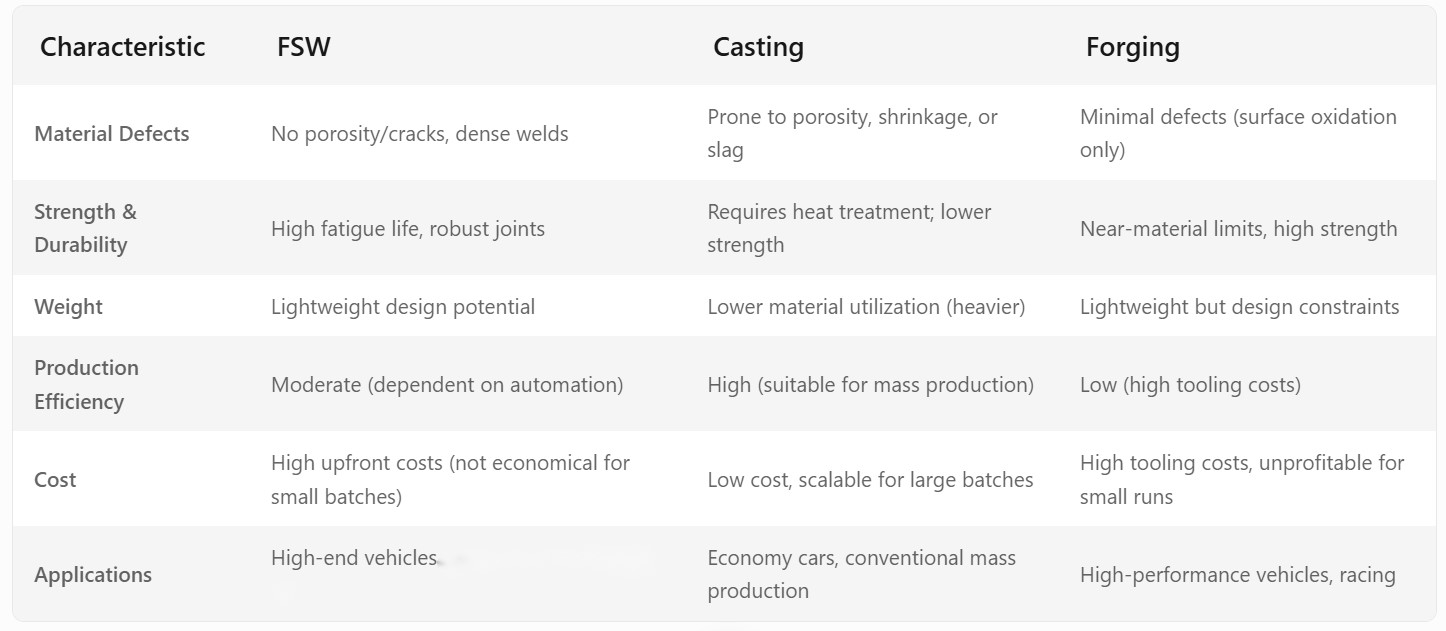
3. Advantages and Challenges of FSW in Wheel Manufacturing
3.1 Advantages:
Performance: Enhanced joint strength and reliability, especially for fatigue-prone applications.
Lightweight: Reduces sprung mass (improving handling).
Sustainability: Energy-efficient and pollution-free welding.
3.2 Challenges:
Maturity: Limited use for fully integrated wheels (still emerging).
Equipment Investment: High costs for specialized machinery.
Quality Control: Requires non-destructive testing (e.g., X-ray, ultrasound) for weld defects.
3.3 Future Trends
Growing Adoption of FSW: Expected to expand in electric vehicles (EVs) due to stricter weight reduction demands.
Hybrid Processes: Combining FSW with casting/forging (e.g., FSW joints for forged hubs and cast spokes).
4. AEE experience for wheels welding.
AEE have finished several projects about wheels welding, and fixed the welding process.the typical structure are as below: the rim and disk can be welded from inner inside or outer side.
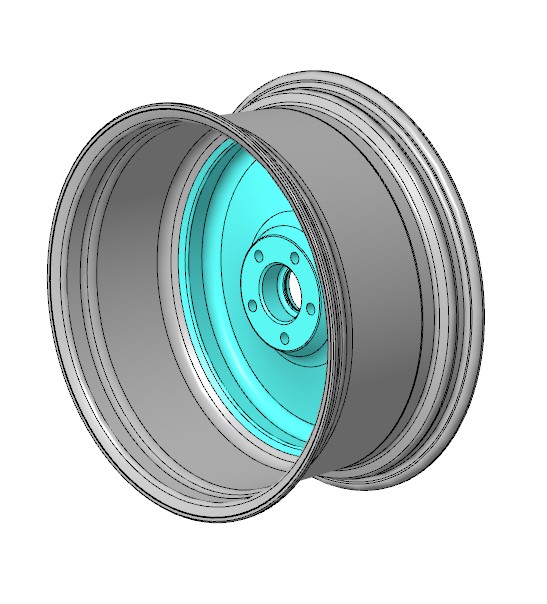
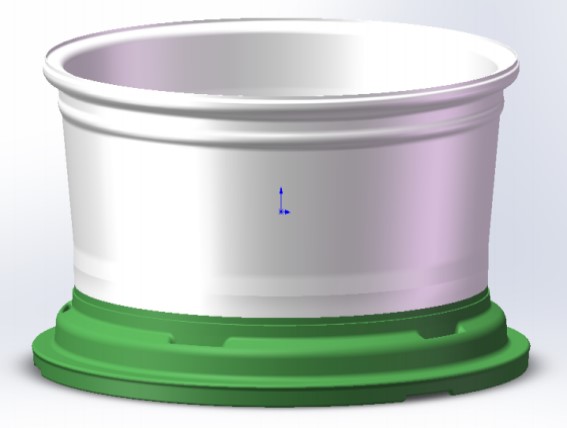
To know more about FSW process for wheels, please contact us to provide more detailed solution.
To delve deeper into the world of FSW process for wheels, kindly reach out to us via overseainfo@aeespace.com. We eagerly await the opportunity to share more about our journey and how we can collaborate to revolutionize your industry.



